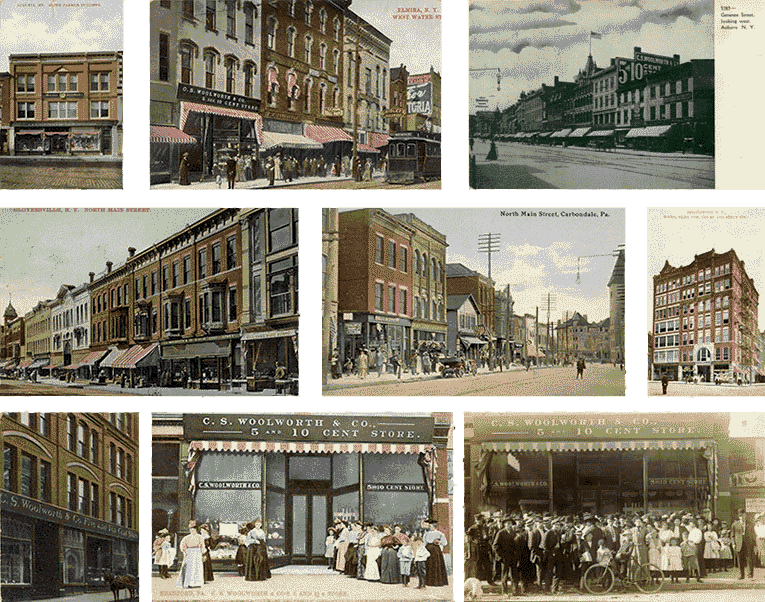Charles Sumner Woolworth
(1856-1947)

Charles Sumner Woolworth could be described as the 'five' in five-and-ten. He was Chairman of the giant F.W. Woolworth Co. for twenty-five years, after taking on the mantle left by his brother Frank in 1919. But, long before that, he managed the second Woolworth 'Great Five Cent Store' in Harrisburg, Pennsylvania, USA, before ten cent lines were introduced. He went on to build his own successful retail company, which merged with others in 1912 to form the world's largest chain. He dedicated his life to value retailing. His sixty-eight years of service remain unmatched in the industry to this day. After hours he was a much-loved family man and a patron of the arts, who remained firmly grounded and had a modest lifestyle despite his commercial success.
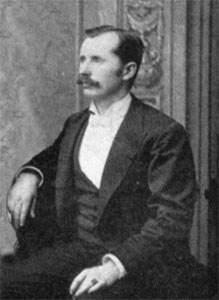 The young Woolworth was born in Rodman, New York on 1 August 1856. He was baptized 'Charles Sumner' after the leading anti-slavery campaigner, but was universally known as 'Sum'. He worked hard at school and was considered less of a dreamer than his older brother. Outside school hours he worked on the family farm and seemed happy to pursue a career there until his brother went off to seek his fortune as an apprentice in a local dry goods store. Sum followed Frank into retailing as soon as he reached his majority at the age of twenty-one.
The young Woolworth was born in Rodman, New York on 1 August 1856. He was baptized 'Charles Sumner' after the leading anti-slavery campaigner, but was universally known as 'Sum'. He worked hard at school and was considered less of a dreamer than his older brother. Outside school hours he worked on the family farm and seemed happy to pursue a career there until his brother went off to seek his fortune as an apprentice in a local dry goods store. Sum followed Frank into retailing as soon as he reached his majority at the age of twenty-one.
Over the next two years he learnt the basics of retailing in the Augsbury and Moore store at American corner in Watertown, New York. Sum was less awkward with customers than his brother, and equally meticulous when it came to paperwork, accounting and buying. He later credited his boss, the store's co-owner William Harvey Moore, as the mentor who taught him about the retail trade. He also built strong friendships with his co-workers, including Fred Morgan Kirby, and established a network of supplier contacts. This would go on to serve him well.
The Woolworth brothers worked side-by-side at Moore's. Frank focused on display and managed the stockroom, while Sum was mainly engaged front-of-house on customer service. As an experiment to tackle falling sales, William Moore had Frank display a table of surplus goods at the fixed price of five cents. This set the brothers wondering whether a store could prosper selling just five cent goods. In 1879 Frank took the plunge. He persuaded Moore to advance him $300 of merchandise to open a store of his own. After a false start in Utica, the Five Cent store proved a hit in Lancaster, Pennsylvania. At the end of the first day's trading he wrote to his father to share the news. He had taken $127.65 and planned to open a second store in Harrisburg, which would be managed by Sum.
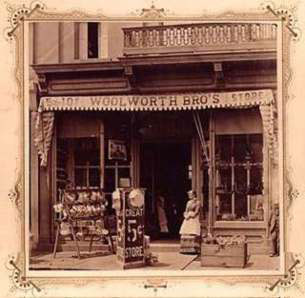 Sum jumped at the chance to join his brother, cramming the tiny store with goods, hiring clerks and overseeing the installation of a hanging banner across the entrance which announced "5¢ WOOLWORTH BRO'S STORE". It opened on 18 July, 1879. Trade was brisk in the first weeks, particularly after the brothers struck on a way of keeping the formula fresh, adding higher priced 10¢ lines to the mix after a few weeks. The fascia of both stores were duly adapted.. The brothers had become the world's first "5 & 10¢" store.
Sum jumped at the chance to join his brother, cramming the tiny store with goods, hiring clerks and overseeing the installation of a hanging banner across the entrance which announced "5¢ WOOLWORTH BRO'S STORE". It opened on 18 July, 1879. Trade was brisk in the first weeks, particularly after the brothers struck on a way of keeping the formula fresh, adding higher priced 10¢ lines to the mix after a few weeks. The fascia of both stores were duly adapted.. The brothers had become the world's first "5 & 10¢" store.
Seeing the potential of his Harrisburg real estate, the landlord demanded a big rent rise. The brothers resisted, instead relocating to nearby Reading, and shortly afterwards to Scranton, where the five-and-ten idea blossomed and became established. Sum loved Scranton and made it his home. As Frank raced around from one town to the next, his younger brother preferred to perfect the formula in Scranton and to base his operations in Lackawanna County, Pennsylvania.
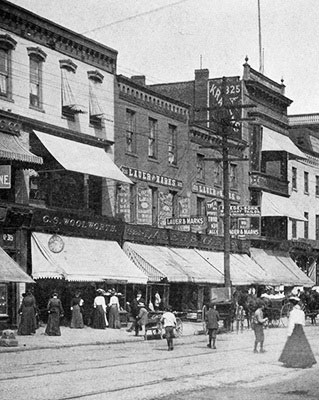 The Scranton building was much larger than the brothers' earlier premises. Sum chose it because it was right at the heart of town. The low rent meant that initially he could afford to use only part of the available space. Partitions were erected to close off the back part of the lower floor and to take the upper showroom out of use. The same estate management model was later used for many of the purpose-built British stores, which were only brought into use gradually as trade demanded.
The Scranton building was much larger than the brothers' earlier premises. Sum chose it because it was right at the heart of town. The low rent meant that initially he could afford to use only part of the available space. Partitions were erected to close off the back part of the lower floor and to take the upper showroom out of use. The same estate management model was later used for many of the purpose-built British stores, which were only brought into use gradually as trade demanded.
Profit grew steadily and Sum was able to buy out his brother in two instalments, in January 1881 and 1882 respectively. In 1884 he was confident enough to open another store, persuading his long-time friend Fred Kirby, who was working as the head of wholesale operations at Moore and Smith, to share a joint venture. Each man put up $600 to launch a Woolworth and Kirby store in Wilkes-Barre, a neighbouring town to the west of Scranton. Fred managed the new store. Initially sales were poor, but Kirby persisted. By 1877 he had banked enough profit to buy out Sum Woolworth and to embark on an expansion programme under his own name. Far from resisting, Sum encouraged the move, and the two remained the best of friends.
Sum worked to perfect the interior look and feel of his Scranton store. Before long it had mahogany counters with glass dividers and a few glass-fronted showcases. It was brightly lit and the wooden floor was polished to a lustrous shine. The layout was soon adopted by Frank for his F. W. Woolworth stores, and became the standard as the two brothers persuaded family members and former co-workers at Moores to join them in forming a 'friendly rival syndicate' of five-and-ten cent stores. Each of the syndicate chains' stores looked similar inside and out, but operated under its founder's name. Frank Woolworth provided much of the merchandise, encouraging the rivals to club together to maximise their buying power.
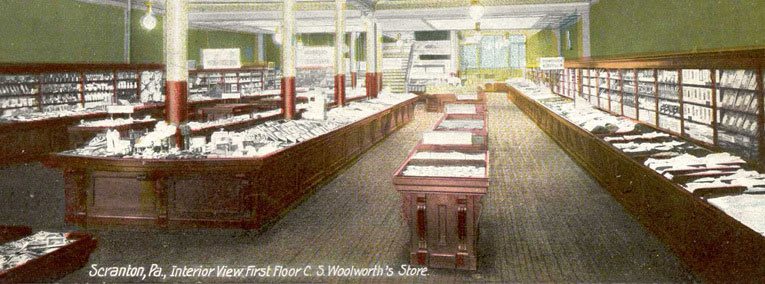
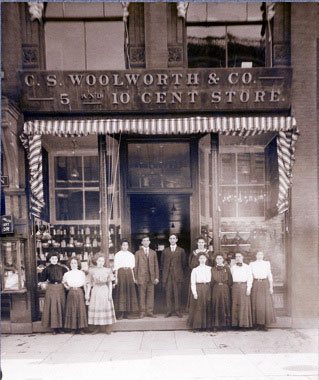
Many Scranton customers were served by Sum Woolworth in person. He liked to lead from the front and was prepared to get his hands dirty! He was a good listener and often adopted ideas from the public. He and the store played an active part in local community affairs.
This hands-on approach was very different to his brother's style. Frank left store operations to his team of Superintendents who were tasked with overseeing the rapidly-expanding chain. He also hired an office staff to take care of the day-to-day, allowing him to focus on Buying. Inch-for-inch Sum's stores made higher sales and more net profit than other members of the syndicate. Between 1885 and 1912 his chain grew steadily to fifteen highly profitable branches. Each opening was hand-picked and closely supervised. Over the same period the F.W. chain grew to 319 branches. These made much higher returns overall, but with some rough with the smooth.
Another benefit to the Syndicate was that C. S. Woolworth made time to train newcomers into the business. Family members, former co-workers and many of the young men who later to managed F.W. Woolworth stores served their apprenticeships not with Frank but under the supervision of his brother Sum.
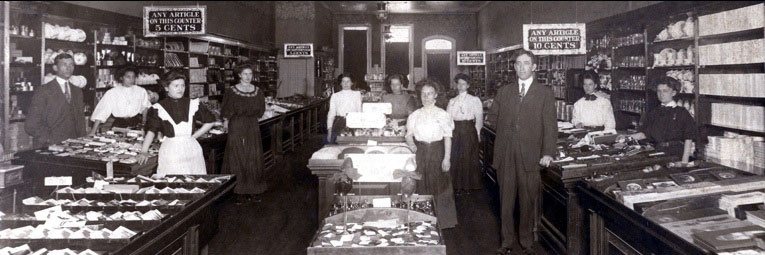
Postcards were one of the ranges that was pioneered by C. S. Woolworth. Each branch stocked both cards and small picture books showing views of the local area. These build to give a fascinating snapshot of American life at the end of the nineteenth and beginning of the twentieth century. The selection included shots of local industry, naturally including his own shopfronts, but also showed people at play on-board pleasure steamers, ambling arm-in-arm along the boardwalk and in the ornamental gardens of some of the well-to-do homes of the day. Sum soon spotted the potential of pseudo-colour cards after his brother brought back samples from a European Buying Trip. Black and white local views were sent to London, where an artist added the colour with a brush. The eye-catching cards proved popular with shoppers and had the added bonus of a very high margin.
Members of the Woolworth Syndicate followed Frank's lead in incorporating their businesses in the period 1905-1908, but C.S. Woolworth did not consider this necessary as his chain was much smaller. The others believed that the move would protect them from the wave a hostile takeovers that was sweeping American industry.
But, in 1912 the Syndicate went a step further, and Sum fell in line. In a scheme engineered by brother Frank, the pioneers decided to join forces, merging together to form a chain of more than five hundred Five and Ten Cent stores under the new name F. W. Woolworth Co. The stock market flotation raised over $30 million for the five founders of the smaller chains. Each man had to swallow his pride and accept Frank's name above the door as President of the new Corporation. Sum Woolworth, Fred Kirby, Seymour Knox, Earle Charlton and William Moore each became a Director and Vice-President. (There are links to their biographies at the foot of this page.)
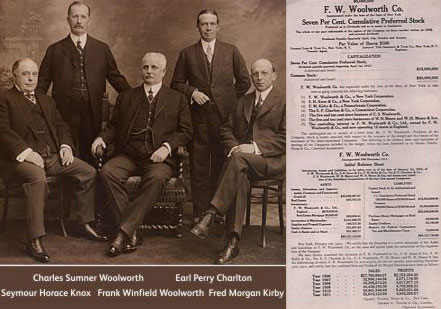
After the merger Sum Woolworth maintained his home base in Scranton. He declined to become embroiled in office politics as executives of the different chains sought to establish themselves in the new Corporation. Instead he concentrated on improving the stores in his native Pennsylvania, and training up-and-coming managers, alongside other commercial interests.
The new-found riches encouraged some of the other founders to splash out on extravagances, including a skyscraper, large country estates and even railway cars. Sum did not follow suit. Instead he divided his income from the merger between canny investments and support for a number of local good causes.
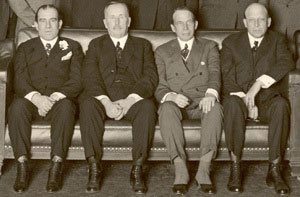
Sum's non-confrontational demeanour made him the perfect candidate to head the F. W. Woolworth Corporation after the death his brother Frank in 1919. The Board unanimously asked him to take on the Presidency, but with traditional modesty he declined. Instead he agreed to take the new role of Chairman, encouraging the Company Treasurer (FD), Hubert Parson, to take the top job. Over the following twenty-five years he saw four Presidents come and go. Each received quiet-spoken advice and good counsel on demand. As Chairman he facilitated debate and ensured that issues were properly confronted and argued out by the Board.
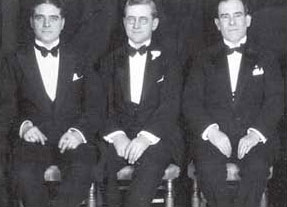
He proved a good friend to the English company, taking an active interest in two of his former trainees, his second cousin Fred Woolworth who took the helm in Britain, and Byron DeWitt Miller, who had abandonned a promising career as a Superintendent in New York City to join the British pioneers, and had maintained strong links to the USA. He also enjoyed cordial relations with William Stephenson, the sole English Director. Miller became Company Treasurer (FD) and a Vice President in 1921 before taking the top job when Parson retired, while Stephenson took the helm in London as MD in 1923 and Chairman after the British flotation in 1931.
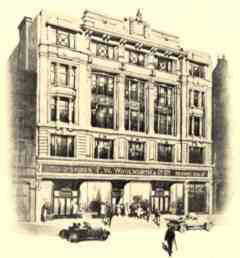 The British connection shone through during a Chairman's visit to London in 1926. He toured a number of stores, including the new flagship in Oxford Street, W1. He made many friends among the staff, taking the time to chat bout their best sellers and their ideas for new merchandise. He noted on his return to Scranton that the child had truly outgrown its parent. Although there were more stores in America, the British chain was expanding rapidly and had been able to self-finance growth straight from profit.
The British connection shone through during a Chairman's visit to London in 1926. He toured a number of stores, including the new flagship in Oxford Street, W1. He made many friends among the staff, taking the time to chat bout their best sellers and their ideas for new merchandise. He noted on his return to Scranton that the child had truly outgrown its parent. Although there were more stores in America, the British chain was expanding rapidly and had been able to self-finance growth straight from profit.
The learning from the trip proved essential during the Wall Street crash, when the Chairman was able to throw his support behind a plan to float a 48.3% stake in the British subsidiary that had been hatched by his Treasurer Byron Miller. Miller had served on the British Board for the chain's first twelve years, before returning to New York to take control of the firm's finances. The plan, which was executed in 1931, helped to restore the fortunes of many investors, including the hapless President Hubert T. Parson, who had borrowed heavily against his shares just before the crash. Miller became the next President. He often sought advice from Sum.
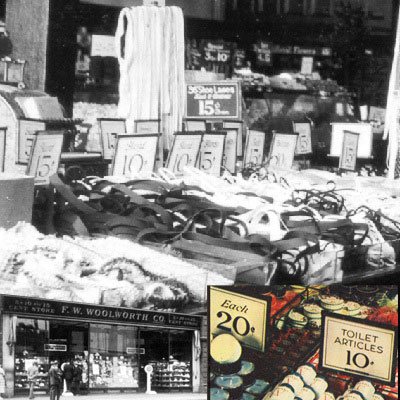
In 1938 Sum Woolworth agreed to be interviewed by another long-serving company employee, John K. Winkler, who had been given permission to write a history of the Five-and-Ten.
Reflecting on his career, which already spanned fifty eight years, he observed that in his time as Chairman there had been only one occasion when he could neither sway the Board to his point of view, go with the flow of discussion. In 1929 he had acquiesced when prices were raised from 10 to 15¢ and in 1933 as the maximum rose to 20¢. But in 1935 he could not consent to dropping the limit completely.
Instead he had abstained. This was typical of his approach. He advised when asked, but allowed the next generation to take the business forward. He knew a proper process had been followed and that the decision to end fifty years of fixed price retailing had been carefully considered.
Three years later he acknowledged that the decision had been correct. Dropping the limit had revitalised Woolworth's. The corporation had surged ahead of its competitors.
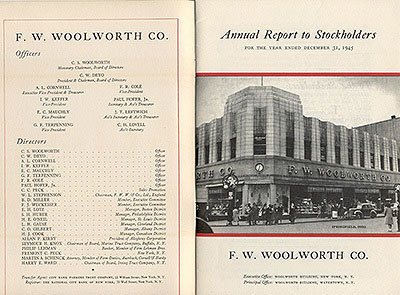
Ill health forced the 88 year old Chairman to step down from active duty on 9 February 1944. He remained a Director and the Honorary Chairman, but handed over responsibility for chairing meetings of the Board to his number two, President C.W. Deyo. After a short retirement, he passed away peacefully in his sleep on 7 January 1947. He had served the chain for sixty-eight of his ninety years.
Sum Woolworth left an impressive legacy. The 5 & 10¢ had grown throughout World War II. Annual turnover rose $17m in 1945 to $447m, Stateside profits were $53m. Investors received a dividend of $2.43 per share.
When Sum had joined there were two stores. By 1947 it had grown to 3,000 across the globe, with 768 in the British Isles, 144 in Canada, 82 in Germany and 8 in Cuba.
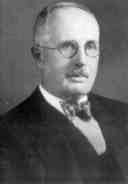 Charles Sumner Woolworth gave exemplary service for 68 years. He helped guide the chain through the transition from the 'Five-and-Ten' to a modern, international variety store chain. But today very few people have ever heard of him, attributing the chain's success to 'F.W.' alone. Sum was also a retail hero, who deserves greater recognition as one of the founding fathers of modern value and supermarket retailing across the globe.
Charles Sumner Woolworth gave exemplary service for 68 years. He helped guide the chain through the transition from the 'Five-and-Ten' to a modern, international variety store chain. But today very few people have ever heard of him, attributing the chain's success to 'F.W.' alone. Sum was also a retail hero, who deserves greater recognition as one of the founding fathers of modern value and supermarket retailing across the globe.
We are very grateful to Scott Oakford and other members of the family for their support in researching this short biography and for sharing information from their private collections of papers and photographs to help us to remember one of the chain's favourite sons.
Shortcuts to related content
1900s Gallery
US Expansion:
Founder Biographies
UK beginnings
Financing and setting up the Company
Join us on opening day in Liverpool
Museum Navigation
